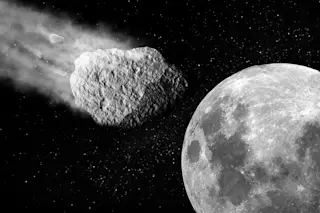Trivia question: When do the greatest number of Americans look up at the sky? My vote is July 4 at around nine in the evening. Waiting for the fireworks to begin, millions stare blankly into the darkening arena above them, even if few are able to identify the stars and planets that make sky watching a joy.
A pity, because it takes only a minute to point out celestial sights to your companions while waiting for the show to start. This year on Independence Day, Venus blazes above the western twilight as the most brilliant star in the heavens. Facing it, you’ll find the sky’s second-brightest light--Jupiter--directly to your left, floating in the south, awaiting its collision this month with comet Shoemaker-Levy 9. The bright orange star nearly overhead is Arcturus, 36 light-years away. And suddenly the night contains friends instead of strangers.
In addition to assorted stars, faint flashes of light may come and go. Distant fireworks in other communities? Maybe not. Mysterious flickerings pepper the sky on other nights as well. Such amorphous flashes in a clear, starry sky are common in the summer, but what could possibly produce these natural fireworks?
Their usual cause is distant lightning. Unlike the often extensive and stratiform clouds of winter, the warm months can find clear skies in one community while thunderstorms erupt nearby. Maybe that’s why people commonly call such vague and silent flashes heat lightning. There’s really no such animal. Any streak of lightning, if buried within a cloud or projected from a remote source, may appear as a flash that seems to embrace the entire sky. It’s even more dramatic when a thin layer of high clouds is present. This can reflect a lightning bolt’s flare from great distances.
When lightning is not responsible, the flash may have a true celestial origin--an exploding meteor. Meteors bright enough to cast shadows burst above your head several times each year. Some of them light up the countryside with enough brilliance to awaken sleepers.
If the incoming meteor is heading straight toward you, it will not appear to whiz across the sky. It may not be visible at all until it disintegrates brilliantly, producing the sudden flash. Nor does it take much mass to do the job. A one-ounce meteor traveling at Earth’s speed of 18 miles per second will become as bright as Arcturus. Those between the size of a marble and a fist are almost certain to be fireballs, often boasting colors rich enough to rival bursting skyrockets. The American Museum of Natural History in New York displays a fragment from a fireball widely seen along the East Coast in October 1992--along with the Chevy Malibu wrecked by the meteor’s crash in a driveway in Peekskill, New York.
Unhappily for astronomers, the greatest flashes in the universe-- supernovas--have been confined to external galaxies for the past several centuries. The closest supernova in our own lifetime lay a safe 170,000 light-years away in an adjacent dwarf galaxy, appearing as a dim star to my sky watchers’ group. None have been seen in our Milky Way since 1604. At least one per century per galaxy is considered normal, so we’re long overdue.
When the tardy supernova suddenly occurs, it would be nice if it conveniently chose that one occasion when everybody’s already gazing skyward. Farfetched? The most famous supernova of all, which was dazzling enough to cast shadows (and powerful enough to produce the Crab nebula and its wildly spinning pulsar), set off its fireworks exactly 940 years ago-- on the Fourth of July.














